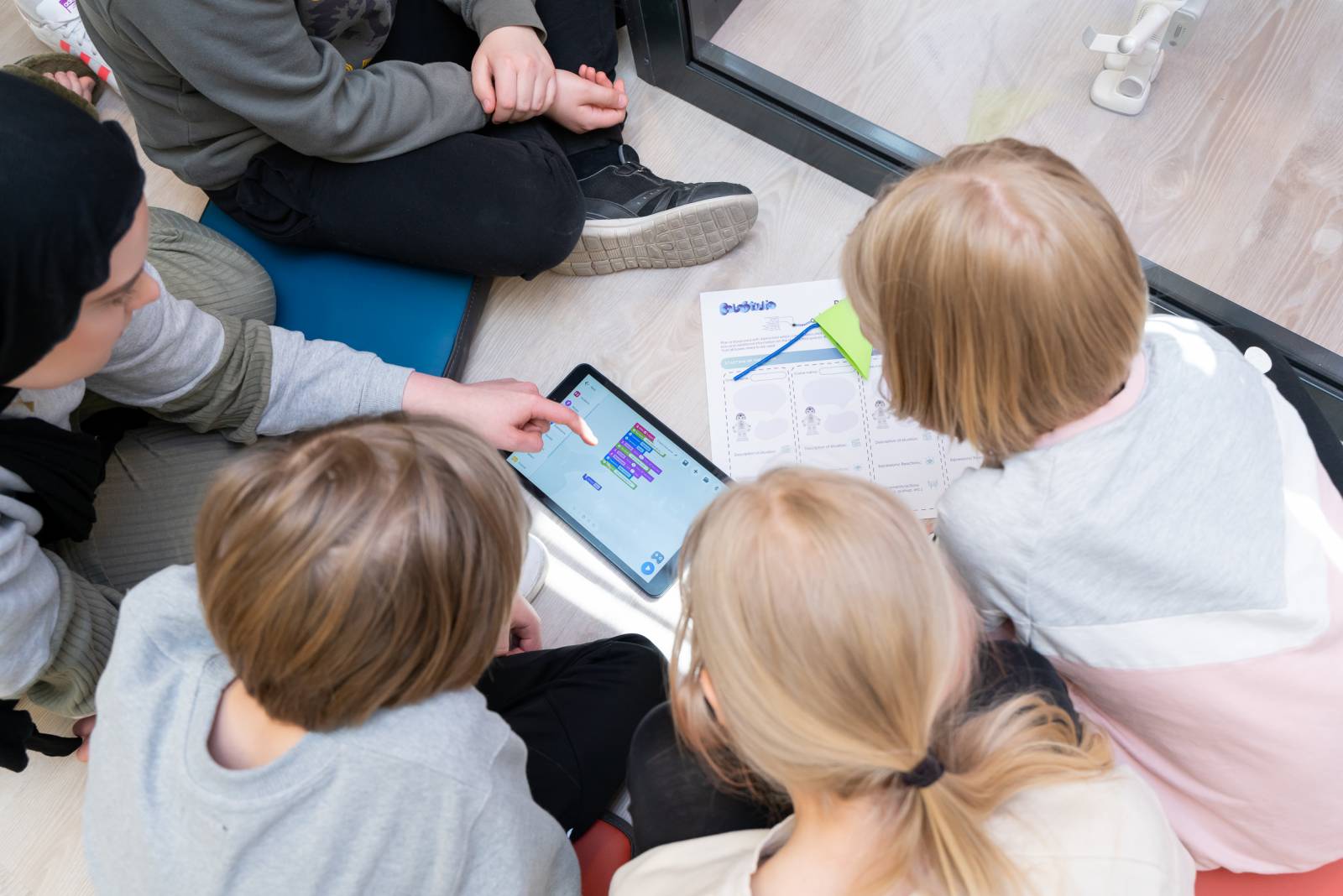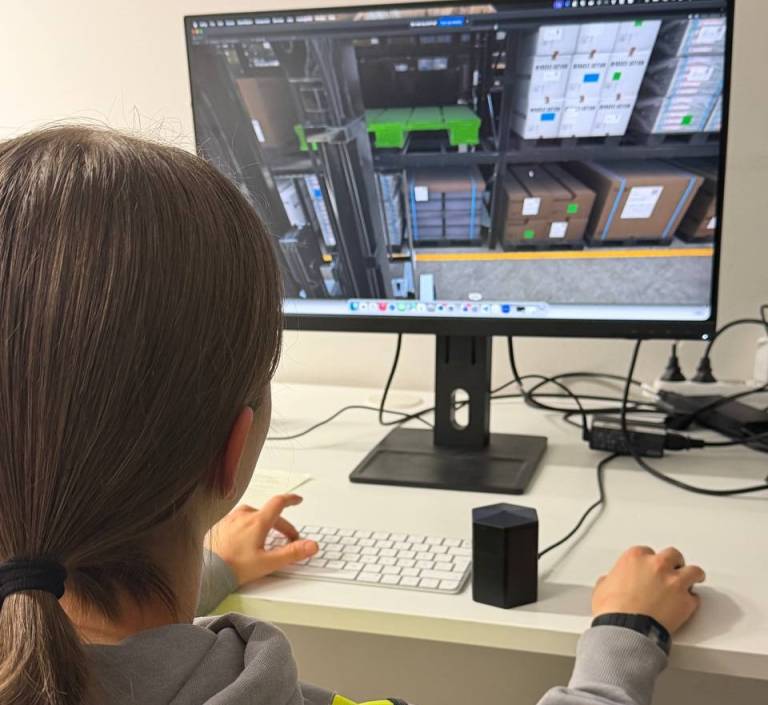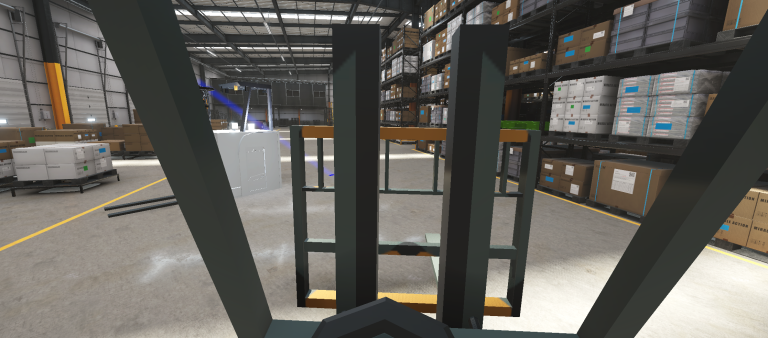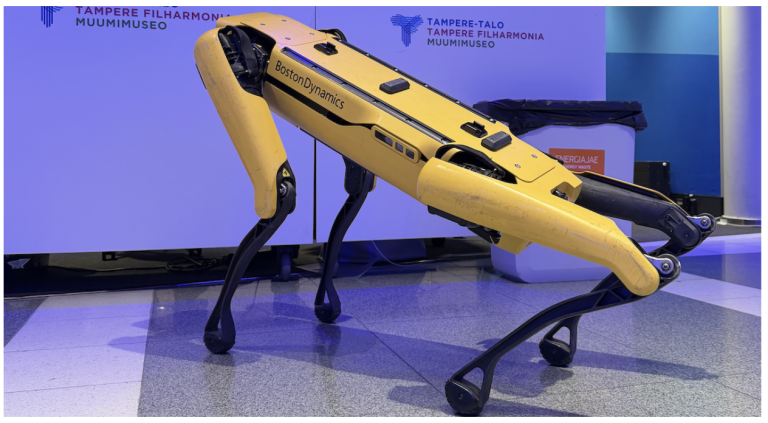The Master’s students in Human-Technology Interaction of Tampere University participated in a study where the idea was to co-learn from social robots with children while taking the role of a study facilitator. This blog post discusses the experiences and challenges while interacting with the children and what should be remembered for similar future works, especially as a facilitator. It was not easy to facilitate especially the Alphamini storytelling session since there were multiple hindrances to the interaction between the students and children. This was the station, which required most interaction between the students and pupils. In this station, the small groups designed a story for Alphamini, and implemented it by using block programming. Next, the students highlight the main obstacles and some tips & hints for overcoming those are described .
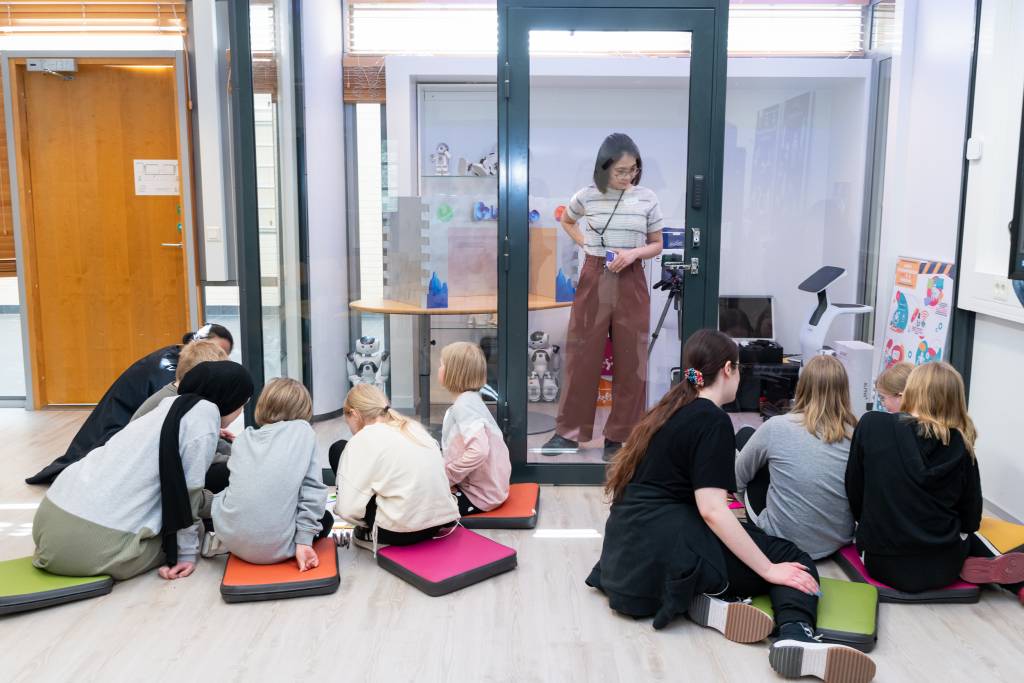
1. Language barrier and how to overcome it
One of the most challenging issues was the language barrier. However, some of the students discovered ways of overcoming the language barrier, making the interaction with the children more fluent. Here are some comments from them about the issue:
Lotta: I was facilitating the Alphamini storytelling station. Communicating in English was hard because even though the pupils knew English, it can be more challenging to communicate with it in an unfamiliar environment. Therefore, as the Finnish-speaking member of our facilitator team, I needed to take a bigger role in communication. It caused some problems for me, as I constantly needed to include my partners by translating and asking them if they had anything to add while also communicating with the pupils.
Eishika: I was also in the Storytelling station. From a non-Finnish speaker’s point-of-view, language was even a more significant problem because the participating pupils were shy to speak English, and I did not speak Finnish at all, so as a result, in the first session, I had no interaction whatsoever. My facilitator partner had to do everything on her own as she speaks Finnish and as I did not understand most of the conversations they had. It is important to let the pupils know beforehand that they might have to communicate in English, so they can be mentally more prepared to communicate. For example, one of the fourth graders mentioned that they did not know they had to speak in English that day. If they had known, they would have brought their English book to get some help. There could also be more Finnish speaking facilitators on the stations that require the highest level of communication.
Yuntian: As a foreign facilitator, the biggest frustration was that there was no response at all from the pupils’ side when I tried to communicate with them in English. I thought they understood what to do, but they refused to react to my communication attempts. When my facilitator partner communicated with them in Finnish, the interaction was more fluent. So, most of the time, I was in an assistant role in the facilitation. To my surprise, when I used Finnish – even with poor pronunciation and using wrong grammar – they understood and responded to me. Then I realized how the mother tongue is a natural icebreaker for the pupils.
Gayathri: I had similar experiences as Yuntian had. The children were hesitant to talk in English at first, but when I started to speak even in poor Finnish (making many mistakes and asking for help from them to translate some words), they somehow started to be more open and even felt confident to speak in English. They corrected the spelling of Finnish words like Särkänniemi, and I felt it helped in making them relaxed. Because when we students show them that we also make mistakes, it is just fine – there is no need to be scared of being wrong. So those tiny moments made the situation more manageable, and we had a good rapport with the kids. As a facilitator, it is important to think how to make the communication situation comfortable and safe between the participants and the facilitators, especially in the more demanding communication situations. Sometimes we need to go a bit out of our own comfort zones as facilitators and that will help the participants to go out of their comfort zones as well.
Luu: In the Pepper quiz learning station, my facilitation team and I found that the language barrier issue was more severe for younger participants. For example, a large part of the second group of participants, who were 4th-grade students, were passive when communicating in English. Most of their responses contained only a few words or succinct sentences, while their speaking volume was low. However, after changing the primary communication language to Finnish, we detected significant changes in their communication style and speaking volume. The sentences were longer, there was much more discussion, and their faces seemed relaxed.
On the contrary, this phenomenon rarely happened during the third workshop, which consisted of 6th-grade pupils. Even though we introduced the Pepper robot and its functionalities in English, they seemed comfortable communicating with us. The pupils even discussed the questions and answers in English, even though they could do it in their mother tongue. They were a bit shy at first, but the shyness quickly disappeared after they started touching the robots and working with the task at hand. So, it seems that hands-on tasks are one of the key aspects on the stations to make the activity pleasant and interesting, as well as for breaking the communication barriers.
Husnain & Zafor: Facilitating the learning station between the Nao Exercise Robot and both the 4th and 6th graders was fun. Each group had different kinds of interaction with the robot and the facilitators. Facilitators performing the exercises with the students played a significant role in making them comfortable in the environment. Some students seemed to be more interested in robots and their activities, while others showed less or no interest. We found out that the lack of interest was due to some of them had less knowledge of English, to which they seemed a bit hesitant to participate freely. The personality of the pupils being introverted or extroverted also influenced their engagement degree.
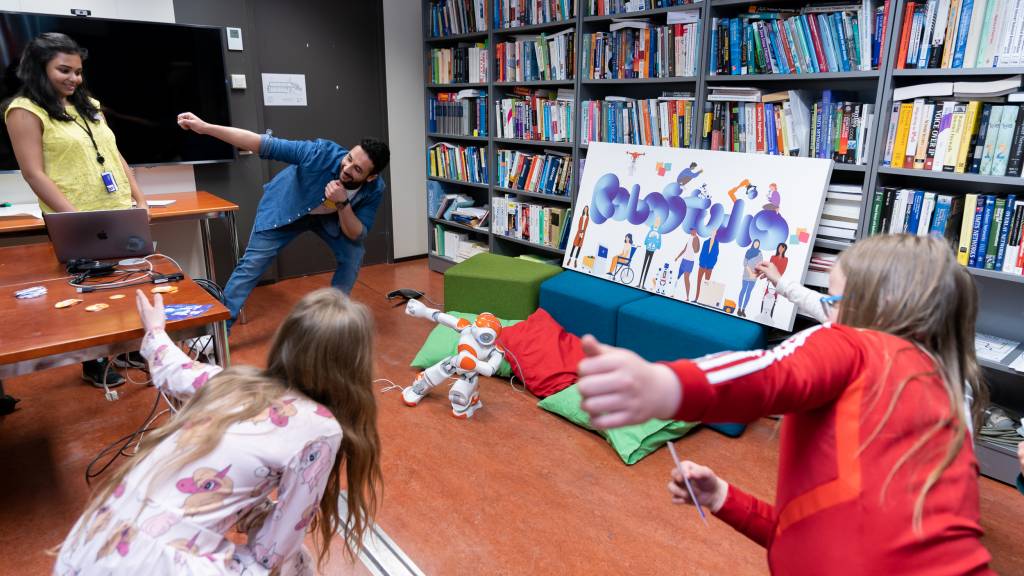
2. The importance of icebreaking in communication with children
The student facilitators emphasized the role of icebreaking in workshop facilitation. Some ideas about what could be done to make the children more comfortable for the interactive workshop will be mentioned next.
Lotta: We did not know the pupils in any way. More significantly, the pupils did not know us, which is why they had a hard time communicating with us. They were shy, which could have been caused by the storytelling task, which required a lot of communication. The interaction could have been more natural if we could have gotten time to get to know the pupils in the group first by doing some fun tasks. For future experiences, it would be good to practice including shy pupils instead of just extroverted pupils, because their experience of the storytelling session may be more negative than the pupils who are easily engaged in these kinds of learning tasks.
Yuntian: Icebreaking is essential when facilitating the pupils. However, it is hard for them to be themselves with strangers (facilitators). Sometimes, only telling them what to do is not adequately helpful even though they fully understand the instructions. They need some guidance from the facilitator to trigger their activeness. Some outgoing pupils eager to express themselves even cannot wait to interact with the robot and the facilitators. It is easy for both facilitators and the pupils, for the rest of the pupils can be inspired by the outgoing ones. At the same time, the introverted pupils tended to stay silent during the whole session, no matter how hard the facilitators tried and how much the peers enjoyed it. At this point, facilitators with pedagogical knowledge and practical skills should be helpful. If possible, the teacher of the school group could also step in and help in engaging the shy pupils. However, we also need to accept that it is just fine if some pupils are just observing – each of us have our own ways for learning.
Luu: To improve pupils’ engagement, we also tried to provide encouragement for good answers and challenge the pupils to improve their results after the first attempt. As a result, most pupils were comfortable and engaged during their second or even third trial on the Pepper quiz station.
Some methods which might be valuable during the workshops from Yuntian and Luu:
- The facilitators can introduce themselves to the pupils with small talk about hobbies to let the pupils feel the resonance.
- The facilitators can share their embarrassing moments or jokes to shorten the distance between the pupils.
- A small trick/magic show can attract the pupils’ attention.
- Funny elements that are closely related to the theme are also a promising idea. I showed a video to the participants during the workshop, and they expressed their excitement while attentively watching the video.
3. Preparation is essential
In addition, some homework for facilitators before the facilitating is necessary as well, in case the pupils come up with some random questions that the facilitators may not be able to handle. Ample preparation can ensure the smooth and effective facilitation process.
Rahat: From my experiences, I can say that before attending the session as a facilitator, it is always good to do some homework regarding your station. You can easily find basic information about the robot, some tasks that the robot can do, some questions or discussion topics that the pupils can also relate to, etc. For example, in the last co-learning session when I asked a group of pupils (in Alpha Mini station) if they wanted to work with robots in the future or not, one of them replied that he wants to buy a robot like this (Alpha Mini) and asked me about the price of the robot. When I answered, they became more interested in talking about it, which helped me create a good bond with them in a friendly way. If I did not check the price and other related information about Alpha mini beforehand, maybe they would have been less interested in talking to me at that moment. It is critical to communicate with them in the way they prefer or feel more comfortable, not in the way you want to. So, getting some knowledge beforehand can help a lot during the session.
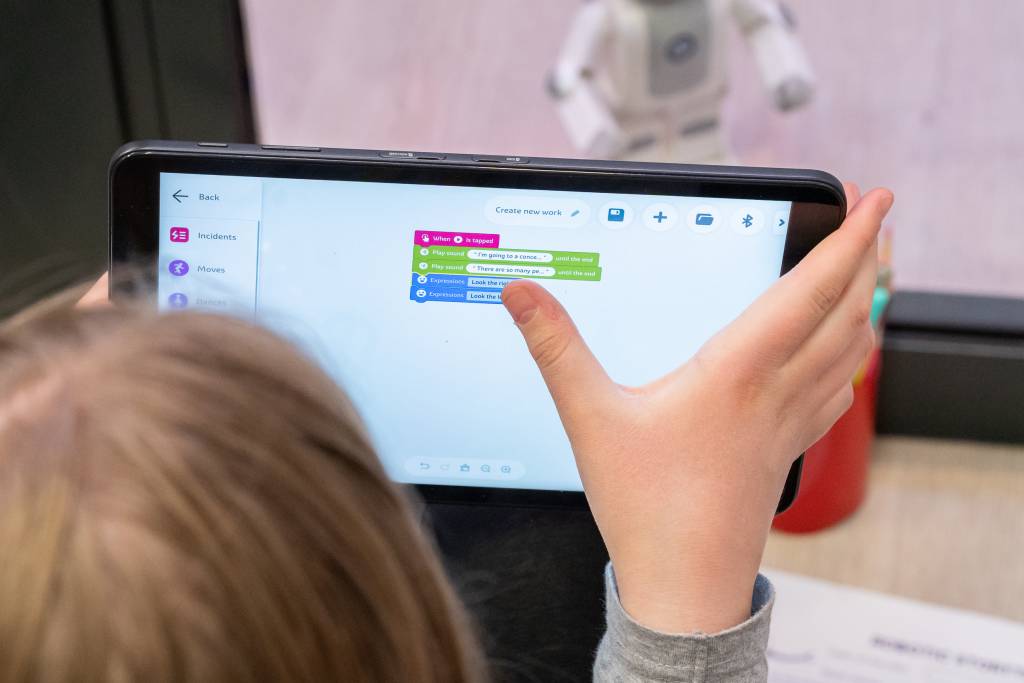
4. The nature of the task also affects the quality of engagement and the facilitation role
Luu: At the Pepper station, we primarily played the role of observers during the workshops. The simplicity and familiarity of the task (a quiz) immensely helped reduce the need for explanation, direction, and initiation. Therefore, we could easily concentrate on noticing valuable insights from the participants’ behavior and speeches. We also noticed that the surprise element of new questions in different tries also provided essential excitement for the participants and amused them during the task. It seems that hands-on tasks create a relaxing atmosphere and are comfortable for all. Thus, especially with the younger learners it is smart to design the tasks having as much hands-on approach as possible.
Lotta: The nature of the storytelling task was one of the reasons why it was too easy for us to take the facilitator role instead of a co-learning role. If the task had been a game led by Alpha Mini, it would have been easier to take a more equal role with the pupils.
Gayathri: In the storytelling task, some ideas by pupils were conceived as illogical by us students. However, it was interesting to see how creative the kids are, and their imagination has no boundaries, whereas we adults always think inside the box. The random thoughts and ideas thrown by the kids in their stories were really cool and exciting, even though they lacked “logic”. Thus, the facilitators need to be aware that the logic and creativity of younger learners is different, and we can also learn about them a lot.
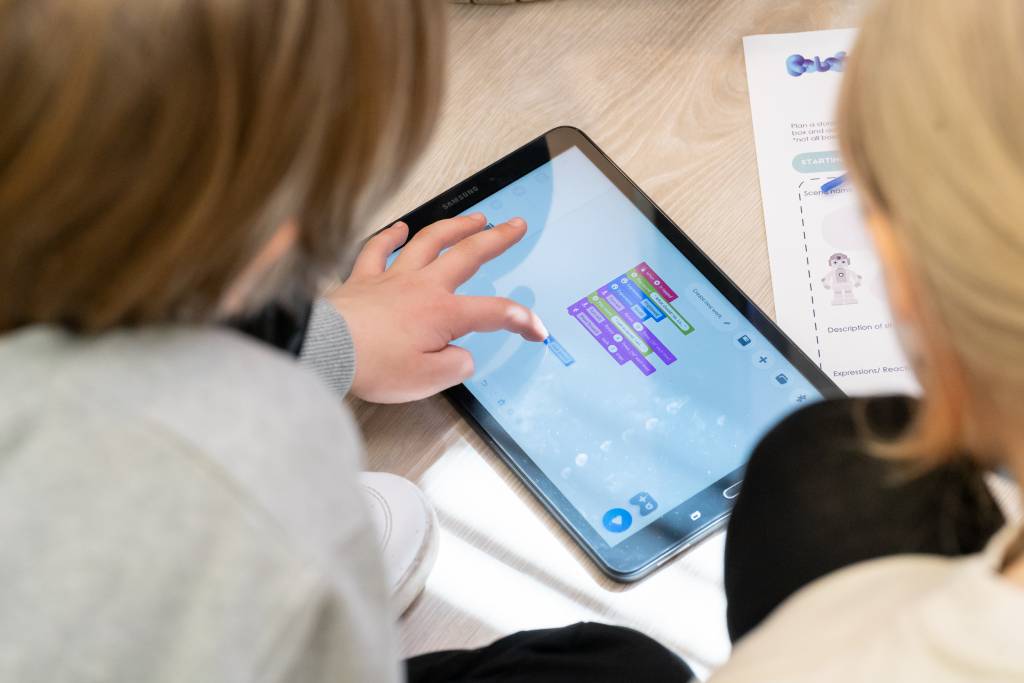
5. Previous experience with robots
Aurora: Another good thing to clarify beforehand would be the kids’ previous experiences with the robots. We worked with Alpha Mini, and younger children had more fun coming up with a story than the older ones. However, when we asked the older children to contribute, they commented that they do the same thing every week or two weeks. This obviously reduces their enthusiasm for the task a lot, so maybe knowing what they have already done would make it easier to have a new task for them, so they can also have fun. Thus, the novelty value of the learning task is a very important aspect in this kind of activity with children.
Husnain & Zafor: At first, fourth-grade students seemed less interested in the Nao robot because everything was not something new to them. Their level of interest only changed after we demonstrated the Tai Chi workout exercise, something they had not seen or performed before. Besides that, there was also a music factor with this exercise, which also helped entertain them. This exercise and experience would have been better if the students had not had previous experience with robots. As a result, they would have participated with more interest and creativity. However, we also noticed that certain students were more confident and excited about the Nao robot because of their previous experience.
Sixth graders had better interaction and seemed more interested in the robot activities at our station as they did not have any previous experience with the robot here. Because of that, sixth graders interacted better and were able to give unique design solutions or enhancements that can be useful in the future, such as giving the robot a more humanistic appearance due to having a somewhat more thoughtful mind than fourth-grade pupils. Therefore, we believed that it would have been far more beneficial for the pupils to have no prior knowledge or experience with the robot because they would have been able to participate to their full ability and interest, resulting in much better outcomes.
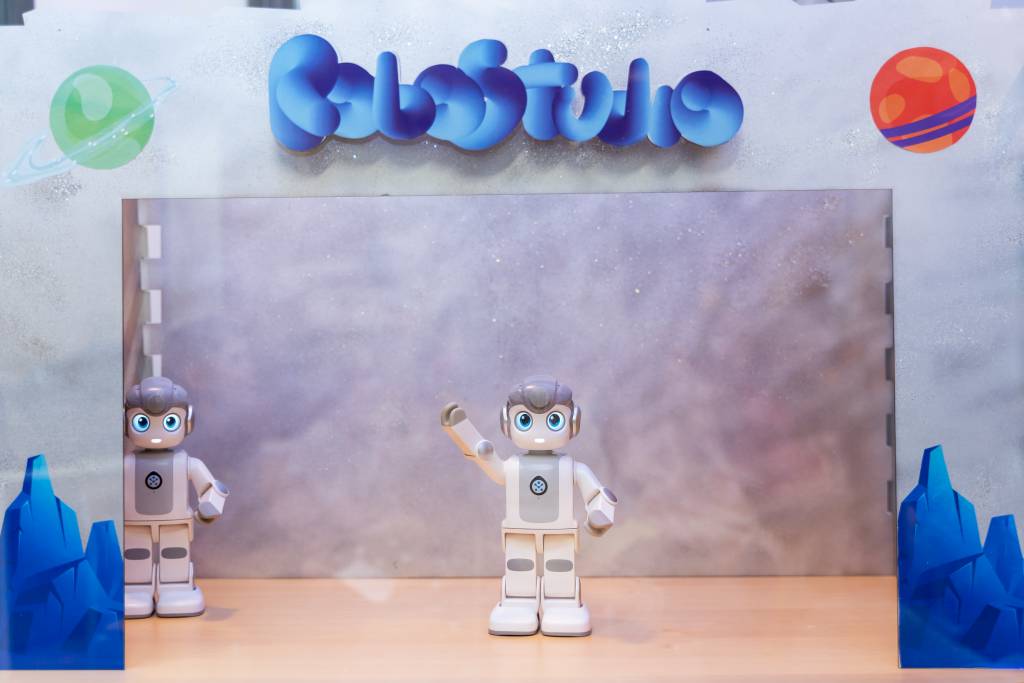
6. Theme
Ville: Interacting with the robots and entering a new environment where new people greet the pupils. There is quite a lot of excitement from the pupils, such as seeing some robots and having conversations with new people in English, also at the start some small amount of shyness which was overcome by either talking with the native students. These students encouraged pupils to try talking in English. For some, the robots are already familiar with the school itself. Some had long conversations with your non-native language. Genuinely every pupil participated happily with their classmates, some questions inspired by curiosity were raised from the fourth graders, why they can’t be more interactive with them, talk to them, and have more fun. Every group felt happily interested in the robots and how they can be used and interacted with.
Closing paragraph by teacher Aino
From my perspective as a teacher/coach of this Robostudio co-learning activity, I think that all of the three workshops that we run together during this May were excellent. I am very proud of our students who took this challenge and were ready to try out something completely new. I believe in learning by doing, and in practicing interaction within different people! And what I have learned over the years when I have done lots of facilitation, as facilitators we need to accept to go a bit out of our comfort zone sometimes, that’s just something we need to accept. Sometimes there just are moments when we don’t know what to say or what to do. For those moments, it’s good to have some tricks or sentences “in the mental pocket”. According to the pupils’ essays (which were collected after the workshops as research data), most of them enjoyed the workshops, and acting with the university students, staff and robots in Robostudio. They learned about different robots and the related data security aspects, and they liked the multicultural setting. Based on these findings and experiences, I really wish I can make this activity as a small learning module and I hope that we will get also students from other disciplines, such as languages and educational studies <3
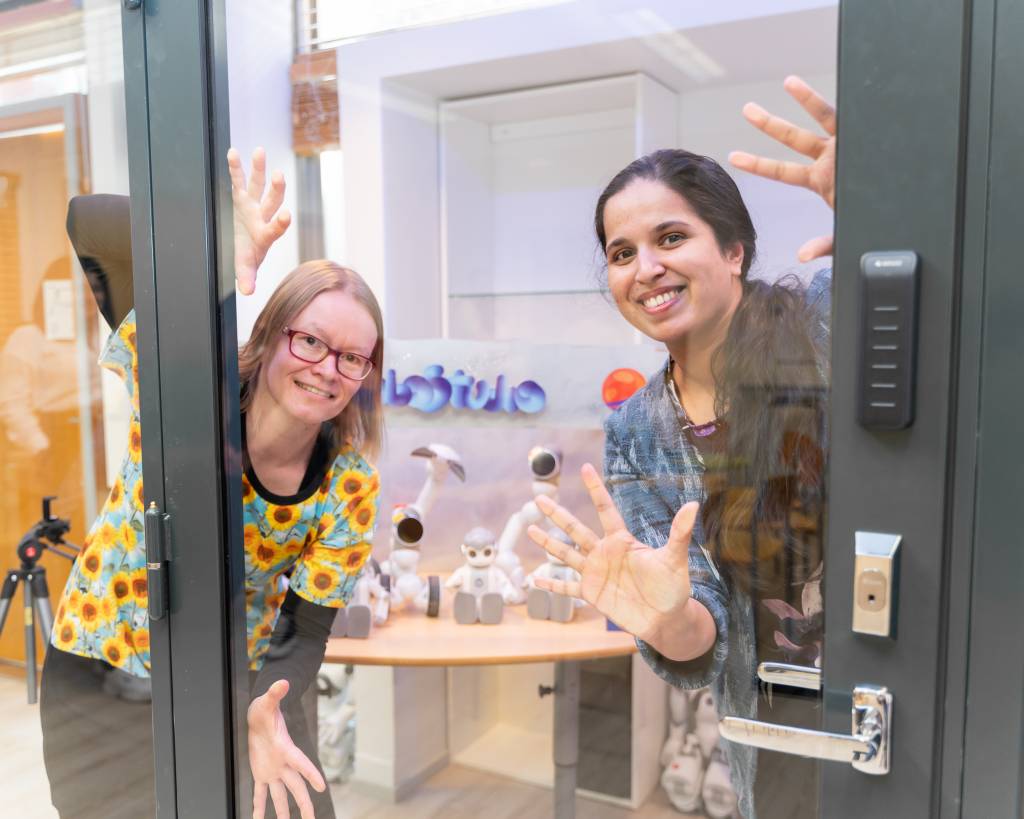
Written by: TAU Human-technology interaction students: Lotta Orsmaa, Yuntian Zhang, Luu Dao, Rahat Rahman, Husnain Khan, Mahammad Kazi Zafor Ullah, and Aurora Katsardis, Gayathri Menon, Eishika Hossain Omi, Ville Uhlgren. Plus their coach of this activity Aino A.


